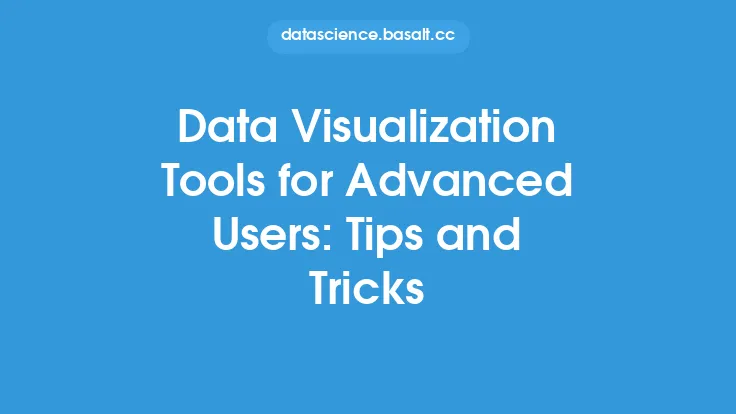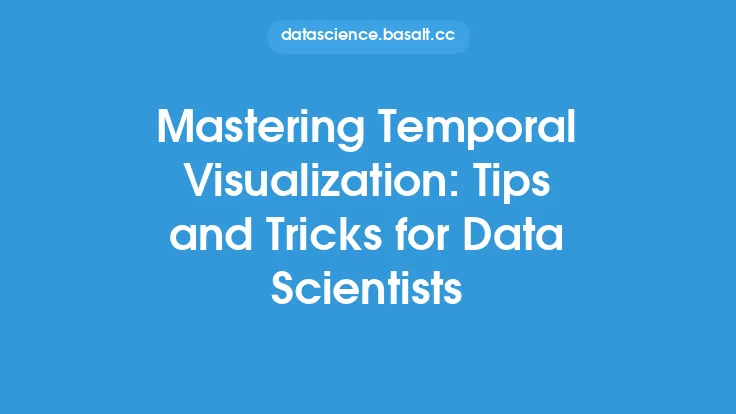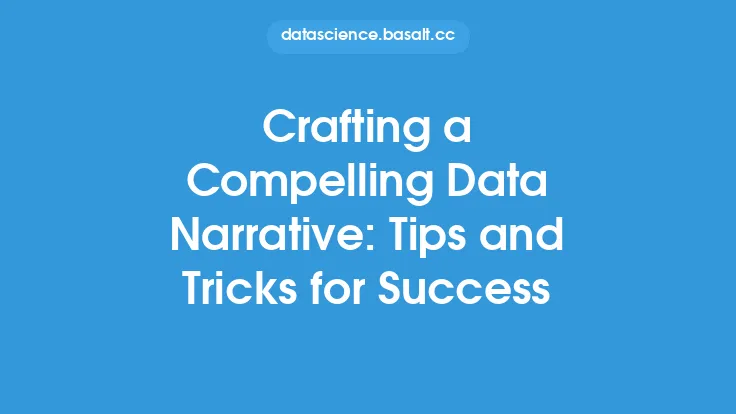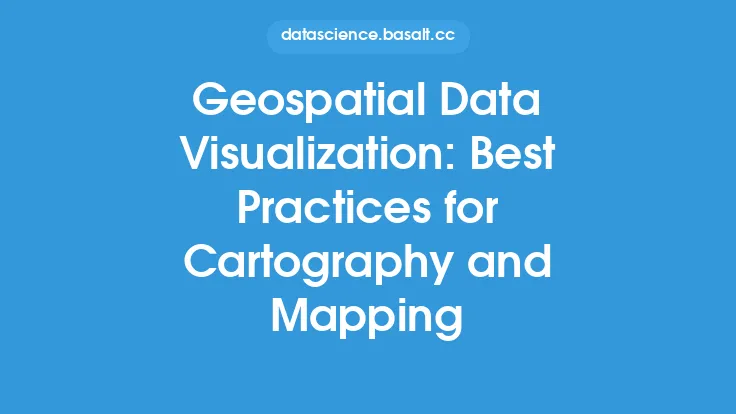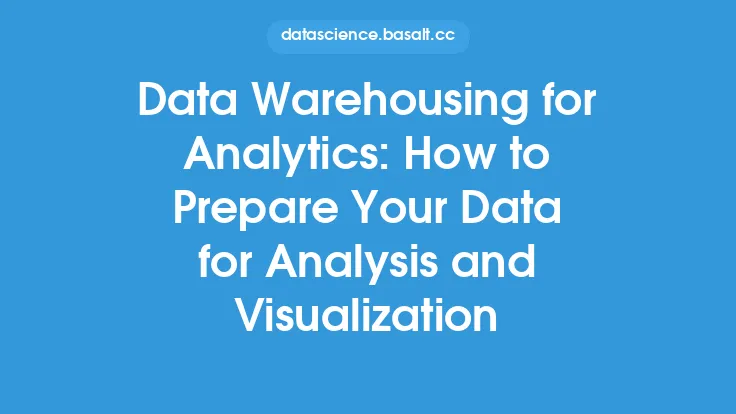Data preparation is a crucial step in the data analysis process, and when it comes to data visualization, it's especially important to ensure that your data is properly cleaned, transformed, and formatted to create effective and informative visualizations. In this article, we'll explore the key aspects of data preparation for data visualization, including data cleaning, data transformation, and data formatting, as well as provide tips and tricks for getting the most out of your data.
Introduction to Data Preparation for Data Visualization
Data preparation for data visualization involves a series of steps that help to ensure that your data is accurate, complete, and in a format that can be easily visualized. This includes handling missing values, removing duplicates, and transforming data types to ensure that they can be properly visualized. Additionally, data preparation for data visualization may involve aggregating data, creating new variables, and formatting data to make it more suitable for visualization.
Data Cleaning for Data Visualization
Data cleaning is an essential step in the data preparation process for data visualization. This involves identifying and correcting errors in the data, handling missing values, and removing duplicates. There are several techniques that can be used for data cleaning, including data profiling, data validation, and data normalization. Data profiling involves analyzing the data to identify patterns and anomalies, while data validation involves checking the data against a set of rules to ensure that it is accurate and complete. Data normalization involves transforming the data into a standard format to ensure that it can be properly compared and analyzed.
Data Transformation for Data Visualization
Data transformation is another critical step in the data preparation process for data visualization. This involves converting the data from one format to another to make it more suitable for visualization. For example, data may need to be aggregated or summarized to create a more meaningful visualization. Additionally, data transformation may involve creating new variables or calculating new values to provide additional insights. There are several techniques that can be used for data transformation, including data aggregation, data grouping, and data pivoting.
Data Formatting for Data Visualization
Data formatting is the final step in the data preparation process for data visualization. This involves formatting the data to make it more suitable for visualization, including selecting the appropriate data types, formatting dates and times, and handling null or missing values. Additionally, data formatting may involve creating a data model or schema to define the relationships between different variables and tables. There are several tools and techniques that can be used for data formatting, including data visualization software, spreadsheet programs, and programming languages such as Python or R.
Tips and Tricks for Data Preparation
There are several tips and tricks that can be used to improve the data preparation process for data visualization. One of the most important is to start with a clear understanding of the goals and objectives of the visualization. This will help to ensure that the data is prepared in a way that is consistent with the intended use. Additionally, it's essential to use high-quality data sources and to validate the data to ensure that it is accurate and complete. Other tips and tricks include using data visualization software to explore and understand the data, creating a data dictionary or catalog to document the data, and using data transformation and formatting techniques to create a consistent and standardized data format.
Common Challenges in Data Preparation for Data Visualization
There are several common challenges that can arise during the data preparation process for data visualization. One of the most significant is handling missing or null values, which can make it difficult to create accurate and informative visualizations. Additionally, data quality issues, such as errors or inconsistencies in the data, can also pose a challenge. Other common challenges include dealing with large or complex datasets, handling multiple data sources, and creating a consistent and standardized data format. To overcome these challenges, it's essential to use a combination of data cleaning, transformation, and formatting techniques, as well as to leverage data visualization software and other tools to explore and understand the data.
Best Practices for Data Preparation
There are several best practices that can be used to improve the data preparation process for data visualization. One of the most important is to use a structured and systematic approach to data preparation, which involves following a series of steps to ensure that the data is properly cleaned, transformed, and formatted. Additionally, it's essential to use high-quality data sources and to validate the data to ensure that it is accurate and complete. Other best practices include using data visualization software to explore and understand the data, creating a data dictionary or catalog to document the data, and using data transformation and formatting techniques to create a consistent and standardized data format. By following these best practices, organizations can ensure that their data is properly prepared for visualization, which can help to create more effective and informative visualizations.
Tools and Techniques for Data Preparation
There are several tools and techniques that can be used for data preparation, including data visualization software, spreadsheet programs, and programming languages such as Python or R. Data visualization software, such as Tableau or Power BI, can be used to explore and understand the data, as well as to create interactive and dynamic visualizations. Spreadsheet programs, such as Excel, can be used to clean, transform, and format the data, as well as to create charts and graphs. Programming languages, such as Python or R, can be used to automate the data preparation process, as well as to create custom visualizations and analyses. Additionally, there are several specialized tools and techniques that can be used for data preparation, including data profiling, data validation, and data normalization.
Conclusion
Data preparation is a critical step in the data analysis process, and when it comes to data visualization, it's especially important to ensure that your data is properly cleaned, transformed, and formatted to create effective and informative visualizations. By following the tips and tricks outlined in this article, organizations can improve the data preparation process and create more accurate and informative visualizations. Additionally, by leveraging data visualization software and other tools, organizations can explore and understand their data, identify patterns and trends, and make more informed decisions. Whether you're working with small or large datasets, data preparation is an essential step in the data visualization process, and by using the right tools and techniques, you can create more effective and informative visualizations that help to drive business success.
